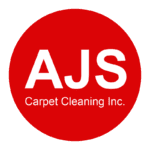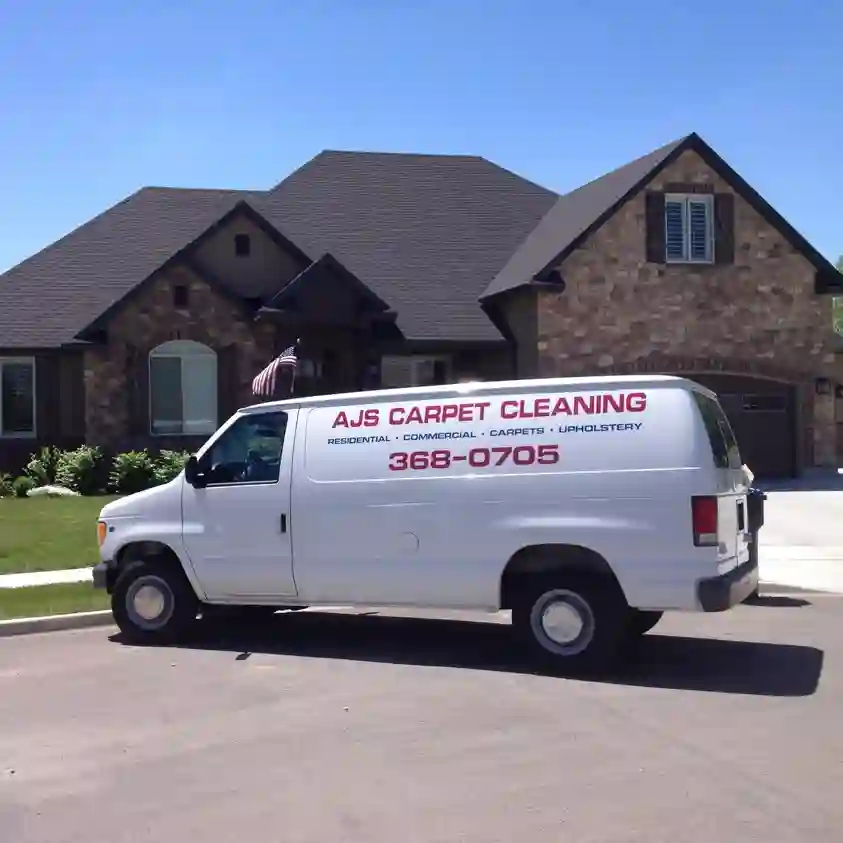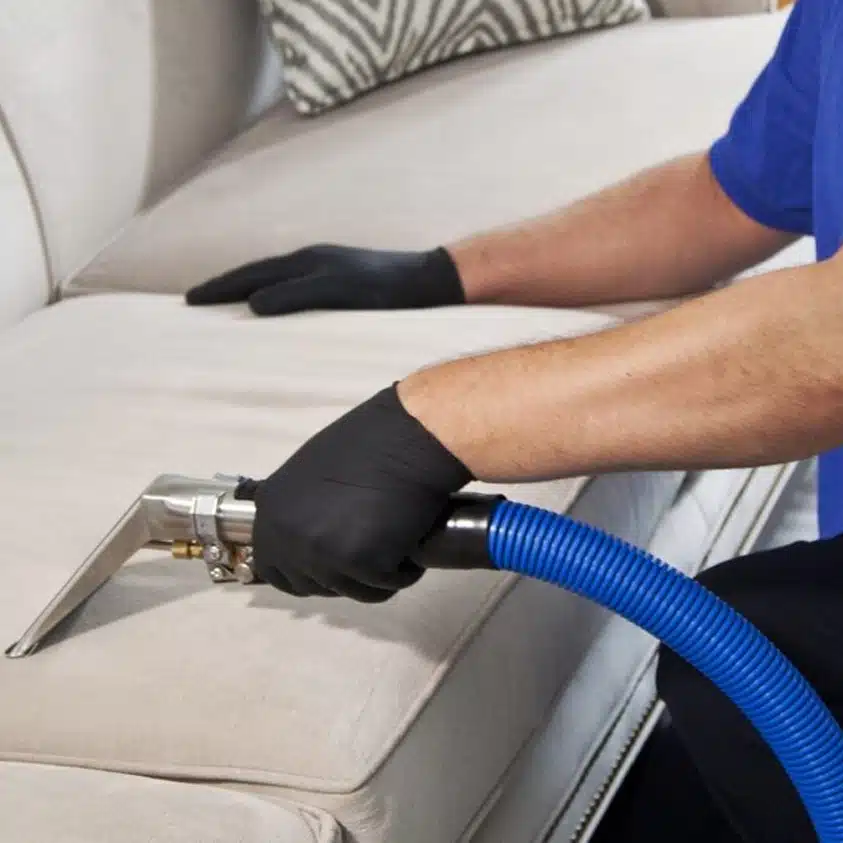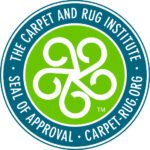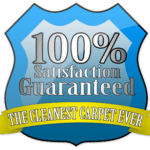Introduction
Carpet cleaning is an essential concern while cleaning to maintain the appearance and hygiene of your home. However, it’s crucial to prioritize safety, especially when using cleaning products that may contain hazardous chemicals. In this article, we’ll explore eco-friendly and non-toxic solutions for carpet cleaning, discuss the risks associated with traditional cleaning chemicals, and provide tips for safe and effective carpet care for any type of carpets including different types of carpet tiles.
Green and Eco-friendly Cleaning Solutions
A growing number of homeowners are opting for environmentally friendly carpet cleaning products, and for good reasons. These eco-friendly solutions provide several benefits:
Health and safety: Green carpet cleaners are typically free of harsh chemicals, reducing the risk of irritation and health issues related to chemical exposure.
Pet and child safety: Eco-friendly products are often gentler and safer for use around pets and children.
Indoor air quality: Using non-toxic cleaning solutions can improve indoor air quality by reducing the presence of volatile organic compounds (VOCs) released by traditional cleaning products.
Some popular eco-friendly and non-toxic carpet cleaners include plant-based enzymes, oxygen-based cleaners, and vinegar-based solutions. These products can effectively remove stains, dirt, and odors without posing significant risks to health or the environment.
Hazards of Carpet Cleaning Chemicals
Traditional carpet cleaning products may contain a variety of hazardous chemicals that can pose health risks and harm the environment.
These chemicals can cause a range of health issues, such as skin, eye, and respiratory irritation, allergies, and even more severe problems like liver and kidney damage or cancer. To minimize these risks, it’s crucial to handle and store these products properly, ensure adequate ventilation during use, and consider transitioning to safer, eco-friendly alternatives.
Some of the most concerning chemicals found in conventional cleaning products include:
Perchloroethylene (Perc): Also known as tetrachloroethylene, this solvent is used in dry cleaning and spot removers. Health risks: It can cause dizziness, nausea, and skin irritation. Long-term exposure may lead to liver and kidney damage and has been linked to an increased risk of cancer.
Naphthalene: Derived from coal tar, naphthalene is used as a solvent and deodorizer in carpet cleaning products. Health risks: Inhalation of naphthalene fumes can cause respiratory issues, headaches, and nausea. It is also a possible carcinogen and may cause damage to the liver and kidneys with prolonged exposure.
Sodium Hydroxide (Lye): A powerful alkaline substance, sodium hydroxide is used in some carpet cleaning products to break down stains and dirt. Health risks: It can cause severe burns on contact with skin or eyes and can be fatal if ingested. Inhalation of sodium hydroxide fumes can lead to respiratory issues and throat irritation.
Other Chemicals
Ammonia: A strong alkaline compound, ammonia is used in carpet cleaning solutions to remove stains and dirt. Health risks: Exposure to ammonia fumes can cause eye, nose, and throat irritation, as well as breathing difficulties. Long-term exposure may lead to respiratory issues and damage to the eyes.
Butyl Cellusolve (2-Butoxyethanol): A solvent commonly found in carpet cleaning products, butyl cellusolve is used to dissolve grease and oils. Health risks: It can cause skin, eye, and respiratory irritation. Ingestion can lead to headaches, dizziness, nausea, and kidney or liver damage.
Quaternary Ammonium Compounds (Quats): Used as disinfectants in some carpet cleaning products, quats are effective in eliminating bacteria, fungi, and viruses. Health risks: They can cause skin and eye irritation, respiratory issues, and allergic reactions.
Formaldehyde: A preservative and disinfectant, formaldehyde is sometimes found in carpet cleaning products. Health risks: Formaldehyde exposure can cause eye, nose, and throat irritation, as well as breathing difficulties. It is classified as a human carcinogen and has been linked to an increased risk of cancer.
Phthalates: These chemicals are used as solvents and fragrance carriers in some carpet cleaning products. Health risks: Phthalates can cause endocrine disruption and have been linked to reproductive issues, developmental problems, and hormonal imbalances. To reduce the risks associated with these hazardous chemicals, it is essential to choose eco-friendly, non-toxic, and biodegradable carpet cleaning products. Proper ventilation, protective equipment, and safe handling practices can also help minimize exposure and potential health risks.
More
D-Limonene and hydrofluoric acid are two additional chemicals that can be found in cleaning products, including some carpet cleaners. Here is a brief overview of each and the potential risks associated with them:
D-Limonene: D-Limonene is a naturally occurring solvent derived from the peels of citrus fruits. It is often used in cleaning products, including carpet cleaners, due to its grease-cutting and deodorizing properties. Health risks: While generally considered safer than many synthetic solvents, d-limonene can still cause skin, eye, and respiratory irritation, especially when used in high concentrations or when not properly diluted. Some individuals may also experience allergic reactions to d-limonene. Adequate ventilation is important when using products containing d-limonene to minimize inhalation risks.
Hydrofluoric Acid: Hydrofluoric acid is a highly corrosive and toxic compound that is sometimes used in cleaning products for its ability to dissolve mineral deposits and stains. Health risks: Exposure to hydrofluoric acid can cause severe burns and tissue damage, even in low concentrations. Inhaling hydrofluoric acid fumes can lead to respiratory distress and lung damage, while ingestion can be fatal.
It is crucial to handle hydrofluoric acid with extreme care, using appropriate protective equipment such as gloves, goggles, and masks. Due to its highly hazardous nature, hydrofluoric acid is not commonly found in household carpet cleaning products.
When selecting carpet cleaning products, it is essential to prioritize eco-friendly, non-toxic, and biodegradable options that pose minimal risks to human health and the environment. Proper handling, ventilation, and protective equipment can also help mitigate the risks associated with these chemicals.
Other Safety Hazards
While chemical exposure is a significant concern when it comes to carpet cleaning safety, there are other hazards that one should be aware of, such as tripping, slipping, fire, and carbon monoxide. Here, we discuss these hazards and provide some tips on how to minimize risks:
Tripping: Carpet cleaning equipment, such as power cords, hoses, and cleaning tools, can pose tripping hazards if not properly managed.
To minimize risks:
- Keep the work area clean and organized.
- Tuck cords and hoses away from high-traffic areas.
- Be aware of your surroundings and inform others in the household about potential hazards.
Slipping: Wet carpets and floors can become slippery during the cleaning process, increasing the risk of slips and falls.
To minimize risks:
- Place caution signs or inform occupants about wet areas.
- Wear non-slip footwear while cleaning.
- Dry carpets and floors as quickly as possible to reduce the risk of slipping.
Fire: The use of electrical equipment and flammable cleaning chemicals can increase the risk of fire during carpet cleaning.
To minimize risks:
- Ensure that electrical equipment is in good working condition and properly grounded.
- Avoid overloading electrical outlets and using damaged extension cords.
- Store flammable cleaning chemicals away from heat sources and open flames.
- Keep a fire extinguisher nearby and know how to use it.
Carbon Monoxide: Carbon monoxide (CO) poisoning is a serious concern not only in Utah but also throughout the United States. CO is a colorless, odorless, and tasteless gas that can be fatal if inhaled in high concentrations. It is produced by the incomplete combustion of fuels, such as gasoline, natural gas, wood, and charcoal. In the context of carpet cleaning, truck-mounted machines and improper ventilation can contribute to the buildup of CO in indoor spaces.
According to the Centers for Disease Control and Prevention (CDC), more than 400 Americans die each year from unintentional CO poisoning not linked to fires, over 20,000 visit the emergency room, and more than 4,000 are hospitalized. Although these statistics are nationwide, they emphasize the potential dangers of CO exposure.
In 2014, a family in North Carolina suffered from CO poisoning after a truck-mounted carpet cleaning machine was left running outside their home while the carpets were being cleaned. Two adults and three children were hospitalized, and tragically, one of the children passed away.
Safety Precautions
To minimize the risk of CO poisoning during carpet cleaning, it is crucial to follow these safety precautions:
- Ensure proper ventilation when using gas-powered equipment or working with chemicals that produce CO.
- Install and regularly test carbon monoxide detectors in your home.
- Be aware of the symptoms of carbon monoxide poisoning, such as dizziness, headache, nausea, and confusion, and seek immediate medical attention if you suspect exposure.
- Use a hose long enough to allow the truck-mounted machines to be positioned at a safe distance from the building. Direct the exhaust away from open windows and doors and any air intakes, to prevent fumes from entering the indoor environment.
- Ensure that the truck-mounted machine is well-maintained and regularly serviced to minimize emissions.
By addressing the potential hazards associated with truck-mounted carpet cleaning machines, you can help protect the health of the occupants and contribute to a cleaner environment. Proper maintenance and operation of the equipment, combined with adequate ventilation, are essential steps in minimizing the risks associated with exhaust emissions.
Regulatory Information: MSDS sheets detail a product’s compliance with regulations. They include adherence to OSHA standards in the United States. This ensures the product meets essential safety requirements.
Reviewing MSDS safety sheets helps homeowners and professionals choose safe cleaning products. This understanding ensures safer cleaning and guides response to accidental exposure. It also promotes a cleaner environment by encouraging responsible product management.
DIY vs. Professional Carpet Cleaning Services
When it comes to maintaining the cleanliness and appearance of carpets, homeowners have two primary options: do-it-yourself (DIY) carpet cleaning or hiring professional carpet cleaning services. Both approaches come with their own advantages and disadvantages, as well as specific safety concerns and precautions that must be considered.
DIY Carpet Cleaning: Pros, Cons, and Safety Considerations
Pros:
Cost Savings: DIY carpet cleaning can be more cost-effective than hiring professional services, as you only need to invest in the necessary cleaning equipment and products.
Greater Control: Undertaking the cleaning process yourself allows for greater control over the methods and products used, ensuring that they meet your personal preferences and environmental concerns.
Cons:
Time-Consuming: DIY carpet cleaning can be a time-consuming process, especially for those who are inexperienced or have large areas to clean.
Physical Demands: The cleaning process can be physically demanding, as it often involves moving furniture, operating equipment, and applying manual force to remove stains and dirt.
Less Effective: DIY cleaning may not be as effective as professional cleaning, as homeowners may lack the expertise and equipment to tackle deep-set stains, allergens, and bacteria.
Safety Considerations:
Proper Equipment Use: It’s crucial to read and follow the instructions for all cleaning equipment and products to avoid accidents and damage.
Protective Gear: Ensure you wear appropriate protective gear, such as gloves, goggles, and masks, to minimize the risk of injury or exposure to harmful chemicals.
Ventilation: Maintain adequate ventilation throughout the cleaning process to prevent the buildup of fumes and ensure good indoor air quality.
Other carpet cleaning safety issues
When cleaning carpets, whether DIY or hiring professionals, knowing about MSDS is vital. MSDS, also called Safety Data Sheets, offer in-depth details on cleaning chemicals. They highlight potential hazards and safety precautions. This includes safe handling, storage, and disposal methods.
The Role and Importance of MSDS Safety Sheets:
Identifying Hazardous Ingredients: MSDS sheets list the hazardous ingredients present in a cleaning product, their concentration levels, and the associated risks. This information helps users choose safer products and avoid those with harmful chemicals.
First Aid Measures: In case of accidental exposure or ingestion, MSDS sheets provide vital first aid information, such as how to treat skin or eye contact, what to do in case of inhalation or ingestion, and emergency phone numbers to call for assistance.
Safe Handling and Storage: MSDS sheets include guidelines for the safe handling and storage of cleaning products, including the use of protective equipment, proper ventilation, and storage conditions to prevent accidents, spills, and chemical reactions.
PPE
Personal Protective Equipment (PPE): The MSDS provides recommendations for the type of PPE needed when using a specific cleaning product, such as gloves, goggles, or respiratory protection, to minimize the risk of exposure and injury.
Environmental Precautions: MSDS sheets offer information on the potential environmental impact of a cleaning product and the necessary precautions to prevent contamination of water, soil, or air.
Disposal Considerations: To ensure proper disposal of used cleaning products and containers, MSDS sheets provide guidelines on how to dispose of them safely and in compliance with local regulations, minimizing environmental hazards.
Professional Carpet Cleaning Services: Pros, Cons, and Safety Considerations
Pros:
Better Results: Professional carpet cleaners have the expertise, equipment, and products to deliver superior cleaning results, tackling stubborn stains and deep-seated dirt.
Time and Effort Savings: Hiring a professional service saves you time and effort, allowing you to focus on other tasks or simply relax.
Cons:
Higher Cost: Professional carpet cleaning services can be more expensive than DIY cleaning, especially if you require regular or specialized treatments.
Quality Assurance: It’s essential to research and choose a reputable carpet cleaning company that follows industry standards and uses eco-friendly products to ensure the best results and minimize environmental impact.
Safety Considerations:
Certified Professionals: Verify that the carpet cleaning company is certified by recognized organizations, such as the Institute of Inspection, Cleaning and Restoration Certification (IICRC) or the Carpet and Rug Institute (CRI), to ensure adherence to industry standards and safety practices.
Eco-Friendly Products: Inquire about the cleaning products used by the company and request that they use eco-friendly, non-toxic solutions to minimize health risks and environmental impact.
Ventilation: Make sure the cleaning company uses proper ventilation during and after cleaning to protect indoor air quality. Whether opting for DIY or professional carpet cleaning, prioritize safety. Use protective gear, ensure ventilation, and choose eco-friendly products.
By taking these precautions, you can maintain the cleanliness and appearance of your carpets while minimizing potential risks to your health and the environment.
To summarize, both DIY and professional carpet cleaning services come with their own set of pros and cons, and it’s crucial to weigh these factors against your personal preferences, budget, and safety considerations. By prioritizing safety and eco-friendly practices, you can ensure a clean and healthy environment for yourself and your family.
Steam Cleaning vs. Dry Cleaning: A Comparison Focusing on Safety
When comparing steam cleaning and dry cleaning from a safety perspective, it’s essential to consider the potential hazards and risks associated with each method. By examining these factors, you can make an informed decision about which carpet cleaning technique is safer for your home and family.
Steam Cleaning Safety:
Heat Hazards: The high temperatures used in steam cleaning can pose a risk of burns if not handled carefully. It’s essential to follow the manufacturer’s instructions and use caution when operating steam cleaning equipment.
Slip and Fall Risks: Steam cleaning can leave carpets and floors damp, which may increase the risk of slips and falls. Ensuring adequate ventilation and using fans or dehumidifiers can help to speed up the drying process and minimize this risk.
Mold and Mildew Growth: Prolonged dampness from steam cleaning can potentially lead to mold and mildew growth, which can pose health risks. Properly ventilating the area and using dehumidifiers can help prevent this issue.
Lower Chemical Exposure: Steam cleaning typically uses water and eco-friendly cleaning solutions, which means there’s generally a lower risk of exposure to harmful chemicals compared to some dry-cleaning methods.
Dry Cleaning Safety:
Chemical Exposure: Certain dry-cleaning methods use harsh chemicals or solvents, which can pose health risks if inhaled or if they come into contact with the skin. Ensuring proper ventilation and choosing companies that use eco-friendly, non-toxic products can help mitigate these risks.
Residue Concerns: Some dry-cleaning methods can leave chemical residues on carpets, which could impact indoor air quality and pose a risk to occupants, especially children and pets. Opting for a low-moisture encapsulation technique that uses safer cleaning agents can help address this concern.
Lower Risk of Mold and Mildew: Dry cleaning requires less water than steam cleaning, which means carpets dry faster and there’s a reduced risk of mold and mildew growth.
No Heat Hazards: Since dry cleaning doesn’t involve high temperatures, there’s no risk of burns associated with this method.
Both steam cleaning and dry cleaning have their own safety considerations. Steam cleaning generally presents lower chemical exposure risks but may increase the likelihood of mold growth, slip and fall accidents, and heat-related hazards. On the other hand, dry cleaning can involve the use of harsh chemicals, posing potential health risks, but has fewer concerns related to dampness and heat.
To make the safest choice, consider factors such as the type of carpet, the level of dirt and stains, and the potential health risks associated with each method. Opt for carpet cleaning services that prioritize safety and use eco-friendly, non-toxic cleaning products. This way you can ensure a clean and healthy environment for your home and family.
Ventilation and Protective Equipment During Carpet Cleaning
Proper ventilation is crucial during carpet cleaning to minimize the inhalation of fumes and airborne particles.
Open windows and doors, and use exhaust fans to ensure adequate air circulation. Additionally, wear safety goggles, gloves, and masks during the cleaning process to protect yourself from potential irritants and harmful chemicals.
Carpet Cleaning Safety for Pets and Children:
Ensuring the safety of pets and children during carpet cleaning is of utmost importance. To create a clean and secure environment for your loved ones, it’s essential to follow these guidelines when selecting cleaning methods, products, and addressing potential hazards.
Choose Pet-Safe and Child-Safe Cleaning Methods and Products:
When selecting a carpet cleaning service or products, opt for those that are specifically labeled as pet-safe and child-safe. These products are formulated to be gentle on your carpet and safe for all members of your household, including pets and young children. Be cautious about using harsh chemicals, solvents, or fragrances that could cause respiratory issues or skin irritation.
Use Biodegradable and Non-Toxic Cleaning Solutions:
Minimize potential health risks by choosing biodegradable and non-toxic cleaning solutions. These eco-friendly products help reduce the environmental impact and protect the health of your family and pets. Many carpet cleaning companies now offer green cleaning services that utilize environmentally friendly products and methods.
Keep Pets and Children Away from Freshly Cleaned Areas:
Until the carpet is completely dry and any residual cleaning product has been removed, it’s essential to keep pets and children away from freshly cleaned areas. Wet carpets can pose slip and fall hazards and may also cause skin irritation if pets or children come into contact with damp surfaces.
Prevent Burns from Hot Hoses or Equipment:
During steam cleaning, hot hoses and equipment can pose a risk of burns. To prevent accidents, make sure to keep children and pets away from the cleaning area while the equipment is in use. If you are using a professional carpet cleaning service, inform the technicians about the presence of pets and children in the house and request their assistance in ensuring their safety.
Address Slipping or Tripping Hazards:
Wet floors and carpet can be slippery, increasing the risk of slips and falls. Make sure to block off the cleaned area or use caution signs to alert family members of the potential hazard. Additionally, be mindful of cleaning equipment, hoses, and cords, as they can also present tripping hazards. Keep walkways clear and ensure that all equipment is safely stored when not in use.
Proper Ventilation:
During and after carpet cleaning, maintain adequate ventilation to prevent the buildup of fumes and ensure good indoor air quality. Open windows and doors, and use fans or air purifiers to circulate fresh air, reducing the risk of respiratory issues for both children and pets.
Conclusion
Carpet cleaning safety is an essential aspect of maintaining a healthy and comfortable home environment. By prioritizing eco-friendly solutions, proper ventilation, and protective equipment, you can effectively clean your carpets while minimizing potential health risks and environmental impact.
